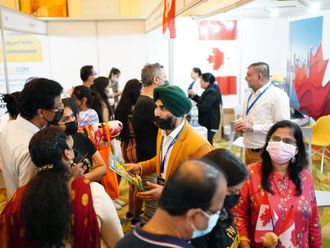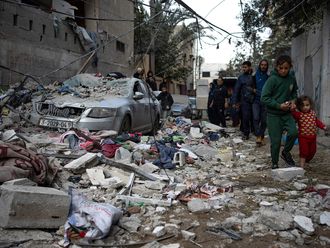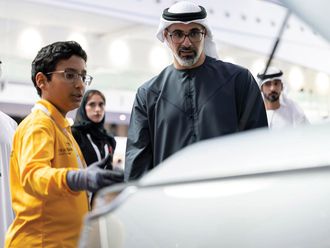Sharjah: The ‘1001 Titles’ project, launched by Sharjah-based Knowledge without Borders to publish 1,001 first-edition Emirati titles in 2016–17, has been playing a role in encouraging young authors to develop their art at the ninth edition of the Sharjah Children’s Reading Festival (SCRF).
A variety of workshops outlining the components of storytelling and the importance of grammar are being held at SCRF under the project.
The sessions at the festival, which runs until April 29 at Expo Centre, were presented by Bodour Ebrahim Al Muaili, an expert trainer on creativity and author of children’s books, and Ehsan Khadr, a conceptual artist who provided advice to enhance the youngsters’ talents.
Under the title ‘Ready to Create Your Story … Go!’, participants in the first workshop concentrated on creativity and the various elements of telling a story through the written word. The second workshop, ‘Where Do Ideas Come From?’, took the children on a journey of discovery about critical thinking.
With the theme ‘Story Factory’, the third workshop was designed to illustrate the realities of book production, beginning with the idea, the outline and writing, and concluding with reviewing and publishing. It also explained the principles of intellectual property rights and the importance of protecting and respecting copyrights in modern life.
Al Muaili believes the workshops are a starting point for the aspiring authors.
“We can help these youngsters see that there is more to writing than simply sitting at a keyboard and seeing what happens. Literature is a beautiful art form and creative writing needs a structure for a story, just as the greatest artists in history need a sketch before they paint. The children have been incredibly enthusiastic, and support and encouragement are vital in order for them to progress and express their ideas, views and concepts,” she said.
Ehsan Khadr conducted a series of workshops which addressed the history of paper, and how it was invented and manufactured, and the history of writing and how it developed from figures and symbols on stones and clay, to words and letters on paper.












